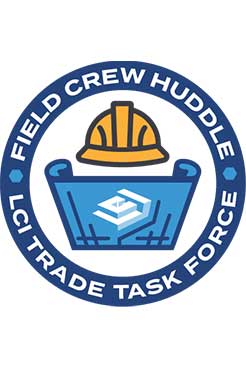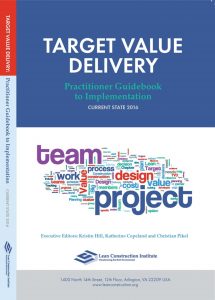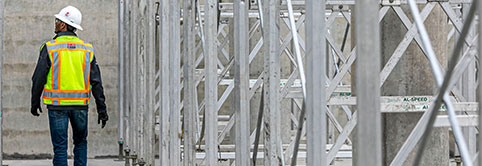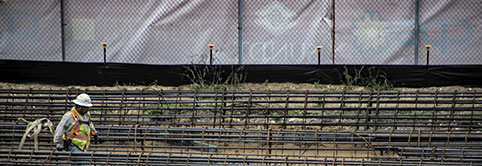Risk & Opportunity Register
Introduction to Risk & Opportunity Register
The vast majority of construction projects are delivered late – and, unfortunately – over-budget. Solving this problem is one of the primary goals of the Lean Construction Institute. We can deploy a number of methods and tools for achieving more valuable projects completed more efficiently, including the risk & opportunity register.
The nature of traditional project delivery methods such as Design-Bid-Build can be chaotic and disorganized, with a lack of clear communication leading to re-work, waste, and new unexpected costs piling on top of one another to cover up for mistakes and poor planning.
One of the principal goals of Lean is to eliminate waste by improving the flow of communication & increase transparency between project teams. This is one of the main functions of the risk & opportunity register.
A risk & opportunity register is one of the most effective Lean tools for anticipating and managing risk, allowing teams to communicate in order to make crucial risk-mitigating decisions before waste accrues and the project becomes over-budget. The tool also allows the team to identify potential opportunities to add value or improve the schedule of the project.

What is a Risk & Opportunity Register?
A Risk and Opportunity Register is part of the overall strategy of building a visual workspace. It allows risks and opportunities to be identified and assessed early, and allows the team to apply intellectual capital rather than financial capital to mitigate or avoid risks, and to monitor and take advantage of opportunities.
The Benefits
Risk & opportunity registers are beneficial for all types of construction projects. However, they are found most frequently in projects using Integrated Project Delivery. In those projects, a risk & opportunity register is mandatory since every member of the project team has a stake in the financial success of the project.
The risk & opportunity register itself is a shared document that allows team members to discuss risks & opportunities together, then pool their knowledge together, thus promoting a mindset of Respect for People. Having a record of previous risks and the ways in which they were addressed also allows the team to revisit and revise current strategies, leading to Continuous Improvement.
As the name suggests, the risk & opportunity register has two separate sides, the risks and the opportunities.
Risk Register
Project managers traditionally allocate a contingency fund to account for unexpected costs that come up throughout the course of a project. Quite often, that contingency fee dries up in the early stages of the project when risks are not properly anticipated. This leads to the management team allocating more money for future risks later in the project.
Used properly, a risk register can mitigate these risks and the financial capital that come with them by utilizing intellectual capital to address the problems instead.
Opportunity Register
Construction teams using traditional project delivery methods spend so much time putting out fires that they don’t have time to consider possible opportunities. With a risk & opportunity register, the team has time to discover opportunities, which open up avenues for additional funds, saved time, and more.
Examples of such opportunities include workflow innovation, a re-imagined allocation of personnel, or adding a new tool or piece of equipment that may make the process more efficient.
How to Utilize a Risk & Opportunity Register
The following are some tips for making the most of your risk & opportunity register.
Be Thorough
When discussing the register with your team, try to determine all possible risks and opportunities that could impact the project throughout all stages of the project’s completion.
What are some things that could go wrong? In the spirit of Continuous Improvement, refer back to problems that have arisen in previous projects you’ve been involved with. Could a similar problem arise in this new project?
With regards to opportunities, are there possible improvements you’ve always wanted to try in a project that you might get the chance to now? Plan for those early to ensure they aren’t forgotten.
Plan Early
Ensure that the register is a key part of the project planning process from the beginning. The sooner potential risks are identified, the easier it will be for the team members to anticipate solutions to those problems so they don’t cause a panic when they turn into a reality.
Revisit Often
Organization and discipline are crucial. The team should put together a process for updating and consulting the register so that it remains a standard piece of the workflow. Effectively communicate to the team who is responsible for updating the list, deciding what items should be discussed at the upcoming meeting, and allocating resources to determine potential solutions to future problems.
Collaborate
Encourage involvement from the entire team to discuss risks and opportunities.
Furthermore, the team should always come into meetings with a mindset of problem solving, exhausting every possible avenue before settling on a binary “yes” or “no” answer to an unexpected change in schedule or circumstance in the project.
Know Your Priorities
Tackle the highest priority & highest risk probability concerns first, and discuss lower priority risks afterwards.
Risk & Opportunity Register Example
The register itself is a list of line items that include potential risks and opportunities, including the likelihood of the event in question coming to pass and the financial hit that would come with it. To see a detailed example and learn how to produce your own risk & opportunity register download the chapter below.
Lean Assessments
How strong is your Lean knowledge? Take a Lean assessment to determine your current state so you have a baseline for improvement. Lean assessments are available for individuals, teams, and organizations alike. Whether you’re new to Lean or are an experienced Lean practitioner, Lean assessments are a great way to get started at LCI!
TAKE ASSESSMENTMore Lean Topics
From 5s to IPD, explore popular Lean design and construction topics below.














